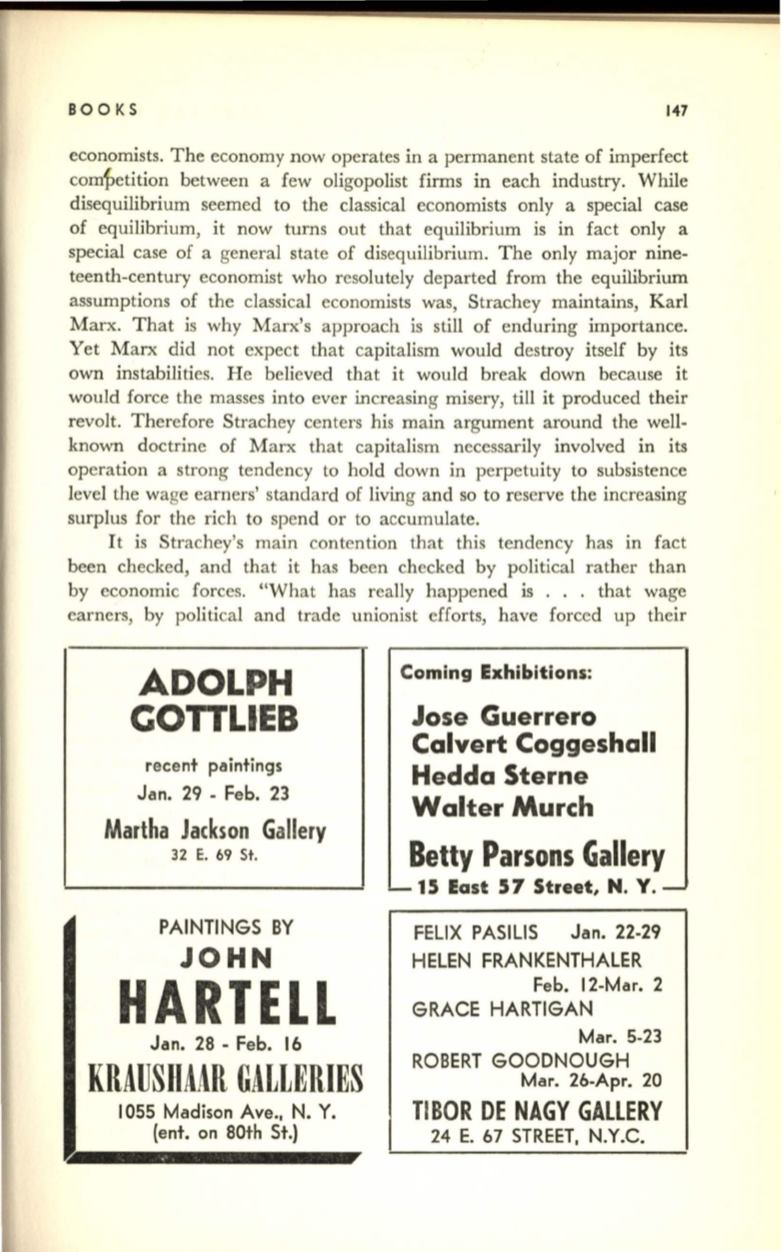
BOO K S
147
economists. The economy now operates in a permanent state of imperfect
comf>etition between a few oligopolist firms in each industry. While
disequilibrium seemed to the classical economists only a special case
of equilibrium, it now turns out that equilibrium is in fact only a
special case of a general state of disequilibrium. The only major nine–
teenth-century economist who resolutely departed from the equilibrium
assumptions of the classical economists was, Strachey maintains, Karl
Marx. That is why Marx's approach is still of enduring importance.
Yet Marx did not expect that capitalism would destroy itself by its
own instabilities. He believed that it would break down because it
would force the masses into ever increasing misery, till it produced their
revolt. Therefore Strachey centers his main argument around the well–
known doctrine of Marx that capitalism necessarily involved in its
operation a strong tendency to hold down in perpetuity to subsistence
level the wage earners' standard of living and so to reserve the increasing
surplus for the rich to spend or to accumulate.
I t is Strachey's main contention that this tendency has in fact
been checked, and that it has been checked by political rather than
by economic forces. "What has really happened is . . . that wage
earners, by political and trade unionist efforts, have forced up their
ADOLPH
COTTLIEB
recent paintings
Jan. 29 - Feb. 23
Martha Jackson Gallery
32 E. 69 St.
PAINTINGS BY
J O HN
HARTELL
Jan. 28 - Feb. 16
KR!USII!!RGALLERIES
1055 Madison Ave., N. Y.
(ent. on 80th St.)
Coming Exhibitions:
Jose Guerrero
Calvert Coggeshall
Hedda Sterne
Walter Murch
Betty Parsons Gallery
-15 East 57 Street, N.Y.
FELIX PASILIS
Jan. 22-29
HELEN FRANKENTHALER
Feb. 12-Mar. 2
GRACE HARTIGAN
Mar. 5-23
ROBERT GOODNOUGH
Mar. 26-Apr. 20
TlBOR DE NAGY GALLERY
24 E. 67 STREET, N.Y.C.


